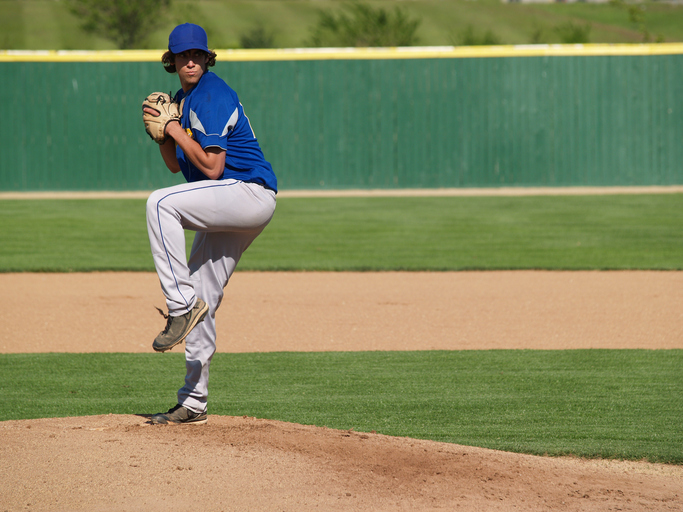
By John R. Mishock, PT, DPT, DC
Injury to the arms of youth baseball players is reaching near epidemic proportions. In a survey of youth baseball players, 74% reported having arm pain while throwing during a typical season. (Am. J. Sports Med. 2015). One study showed that pitchers with injuries to the shoulder and elbow pitched significantly more months per year, games per year, innings per game, pitches per game, pitches per year, and warm-up pitches per game. (Am. J. Sports Med. 2006). Other known risk factors include; increase utilization of the fastball, throwing through fatigue, pitching for more than 1 team, poor pitch mechanics, and physical weakness or inflexibility. USA Baseball and Major League Baseball (MLB) have joined efforts in creating recommendations for both pitchers and fields; the program is known as Pitch Smart (http://m.mlb.com/pitchsmart/pitching-guidelines/.)
A recent study evaluated these guidelines by performing prospective study of Little League players (aged 10 to 13 years). The study participants underwent elbow MRIs, physical examination, and history of arm pain before and after the season. Despite having 100% compliance with the pitch smart guidelines, 48% had abnormal MRI findings at the elbow and 28% experienced elbow pain during the season. The participants also had negative physical changes due to throwing such as, altered shoulder range of motion.
Even when leagues and coaches follow throwing guidelines youth baseball players still get injured. The Pitch Smart Guidelines are meant to protect youth baseball players from injury. Now image when those pitch guidelines are not followed, as is often seen in some leagues and travel baseball organizations. Studies have shown that many coaches lack knowledge or chose not to follow well established injury prevention guidelines. One study showed that 53% of coaches followed pitching rules with only 43% being able to correctly answering questions regarding there correct implementation. (Sports Health. 2012)
There is no one way to reduce all potential for arm injury, however, following the Pitch Smart Guidelines is a start. Furthermore, the evidence has shown that arm injury potential can be reduced with: developing sound scientifically-based pitch mechanics; not allowing pitchers to throw with arm or body fatigue; following pitch count rules; throwing the fastball less than 50% of time when pitching; optimizing mobility, flexibility, strength and power of key throwing muscle groups.
Dr. Mishock’s new book has been released, “The Rubber Arm: Using science to increase pitch control, improve velocity and prevent elbow and shoulder Injuries.” This book can be found at train2playsports.com.
If pain is limiting you from doing the activities you enjoy, give Mishock Physical Therapy a call for a Free Phone Consultation at (610) 327-2600 or email your questions to mishockpt@comcast.net. Like us on Facebook. www.facebook.com/MishockPhysicalTherapy.
* Phone Consultations are not applicable to patients in federal or state funded programs, such as Medicare and Medicaid.
* Screenings are consultations and do not involve a physical therapy evaluation or treatment.
Visit our website to read more physical therapy related articles, learn more about our treatment philosophy, our physical therapy staff, and our 6 convenient locations in Gilbertsville, Skippack, Barto, Phoenixville, Limerick, and Stowe(Pottstown). Our mission is to exceed the expectations of our patients by providing excellence in care and service. We are here to serve you!
